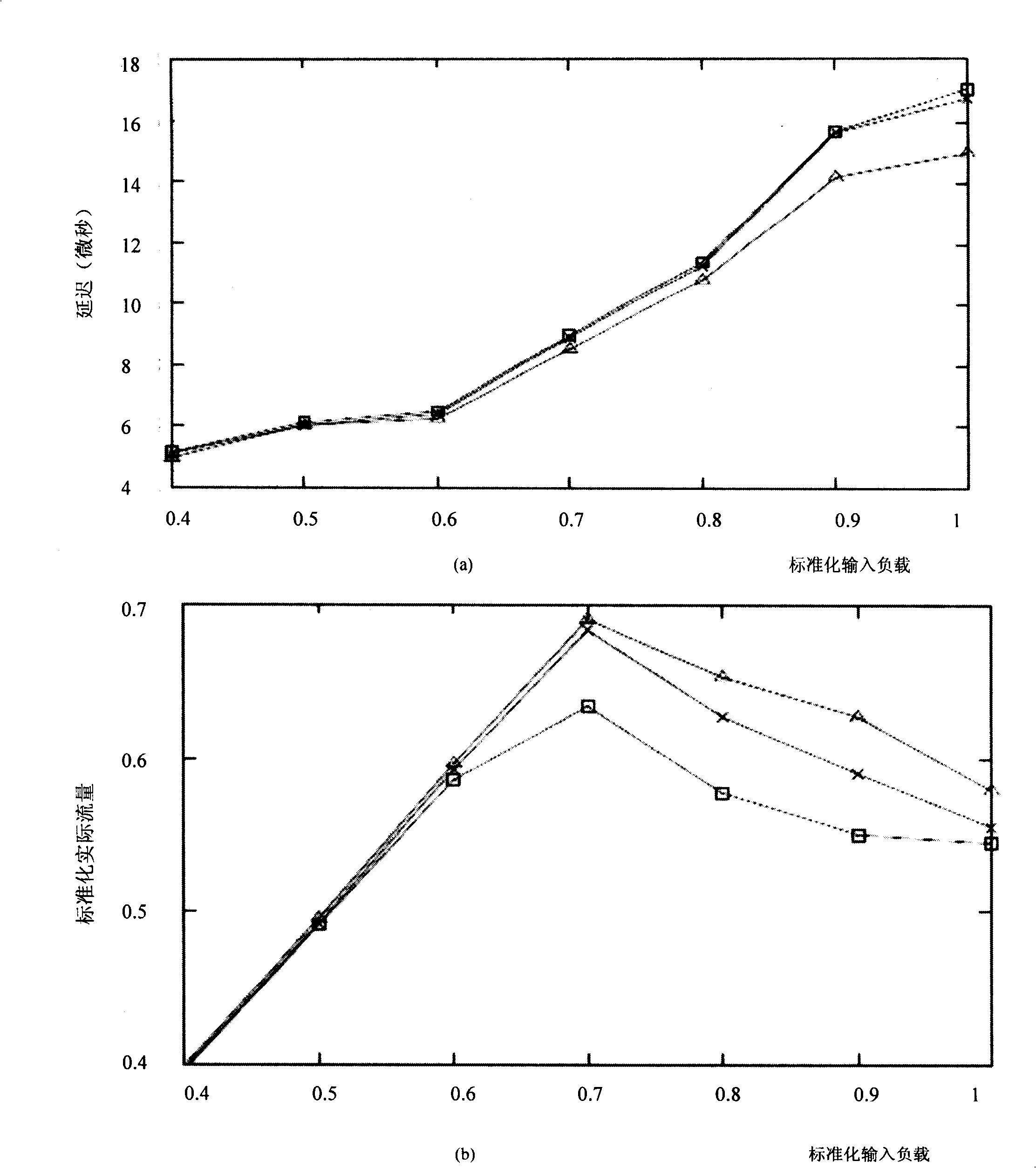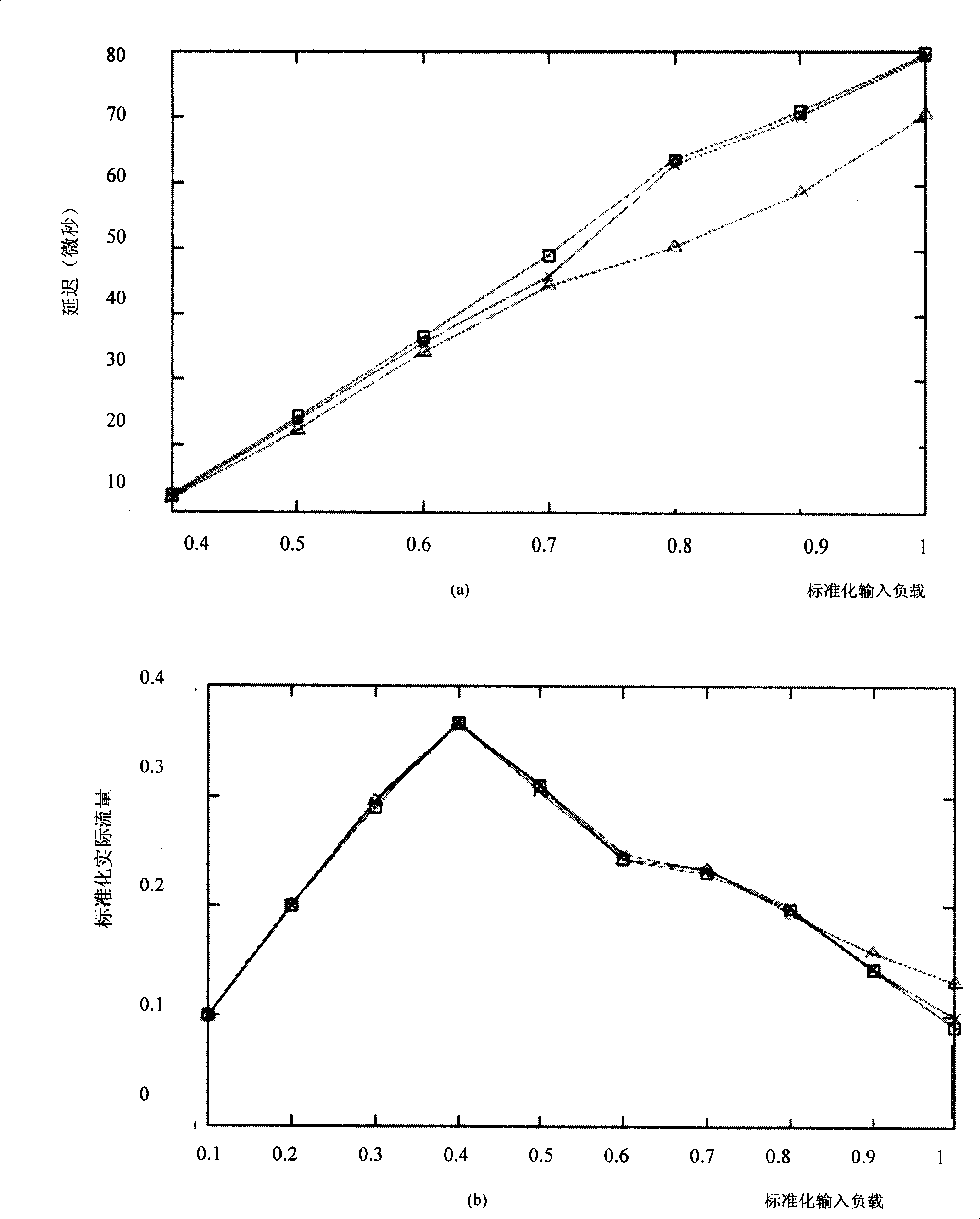Adaptive routing method without dead lock in three-dimensional torus network
An adaptive, deadlock-free technology that can be used in data exchange networks, digital transmission systems, electrical components, etc., and can solve problems such as increased difficulty in methods
- Summary
- Abstract
- Description
- Claims
- Application Information
AI Technical Summary
Problems solved by technology
Method used
Image
Examples
Embodiment Construction
[0086] A physical network can be divided into several virtual subnets. Messages inserted into the network are restricted to routing within a certain virtual subnet. As long as there is no deadlock in each virtual subnet and there is no deadlock between virtual subnets, it can be guaranteed that there will be no deadlock in the entire network. The partitioning method proposed in this paper is mainly aimed at three-dimensional torus networks, and this method can also be extended to higher-dimensional networks.
[0087] The three-dimensional torus network is divided into the following eight virtual subnets: x+y+z+, x+y+z-, x+y-z+, x+y-z-, x-y+z+, x-y+z- , x-y-z+, x-y-z-, x+, x- means the route in the positive and negative directions on the x-axis, the same is true for the y-axis and z-axis;
[0088] Merge the above eight virtual subnets in pairs to obtain the following four virtual subnets: x+y+z * (c 1 +,c 1 +,c 1 ), x+y-z * (c 2 +,c 1 -, c 1 ), x-y * z+(c 1 -, c 2 ...
PUM
 Login to View More
Login to View More Abstract
Description
Claims
Application Information
 Login to View More
Login to View More - R&D
- Intellectual Property
- Life Sciences
- Materials
- Tech Scout
- Unparalleled Data Quality
- Higher Quality Content
- 60% Fewer Hallucinations
Browse by: Latest US Patents, China's latest patents, Technical Efficacy Thesaurus, Application Domain, Technology Topic, Popular Technical Reports.
© 2025 PatSnap. All rights reserved.Legal|Privacy policy|Modern Slavery Act Transparency Statement|Sitemap|About US| Contact US: help@patsnap.com



